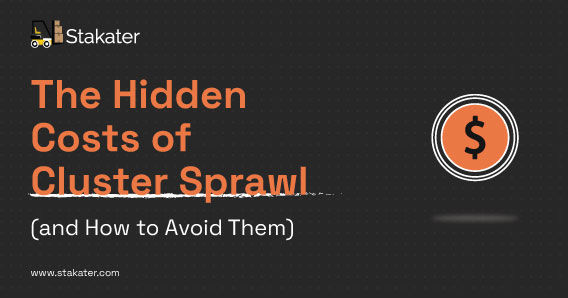What is Kubernetes Multi-Tenancy and Why It Matters
- Rasheed Amir
- Sep 25
- 2 min read
As Kubernetes becomes the go-to platform for deploying containerized applications, more and more organizations are looking to support multiple teams, projects, or business units within a shared infrastructure. That’s where Kubernetes multi-tenancy comes in.
In this blog, we’ll walk through what Kubernetes multi-tenancy is, why it matters, and how we can implement it securely and effectively using tools like the Stakater Multi-Tenant Operator (MTO).
What is Kubernetes Multi-Tenancy?
Kubernetes multi-tenancy refers to the ability to run workloads from multiple independent users (tenants) within the same Kubernetes cluster — while keeping them logically and securely isolated.
A tenant in this context could be:
An internal team (e.g., frontend, backend, data science)
A business unit or project
A customer (in a SaaS platform)
The goal of multi-tenancy is to maximize cluster utilization while ensuring security, resource fairness, and operational clarity between tenants.
Why Multi-Tenancy Matters
Without multi-tenancy, we often end up spinning up separate clusters for each team or customer. While that can offer strong isolation, it also brings a few problems:
High costs: More clusters mean more control planes, nodes, and cloud spend
Operational overhead: Monitoring, upgrading, and securing multiple clusters takes a lot of effort
Inconsistent environments: It’s harder to standardize tools, policies, and governance
Fragmented visibility: Tracking usage and compliance becomes more difficult across clusters
Multi-tenancy helps solve all this by letting multiple tenants safely share the same cluster - reducing both infrastructure costs and management overhead.
Multi-Tenancy Models in Kubernetes
There are three common approaches to multi-tenancy in Kubernetes:
Soft Multi-Tenancy (namespace-based)
Tenants share the same control plane and worker nodes
Isolation is enforced using RBAC, NetworkPolicies, ResourceQuotas, and more
Works well for trusted tenants (like internal teams)
Hard Multi-Tenancy (vClusters or K8s-in-K8s)
Tenants get isolated control planes using tools like vCluster
Offers stronger security but comes with more overhead and complexity
Hybrid Multi-Tenancy
Combines namespace-based isolation with selective hard boundaries
Great for organizations that need flexibility between internal teams and customer use cases
Key Requirements for Safe Multi-Tenancy
To implement multi-tenancy effectively, we need to enforce:
RBAC: Define who can access what within each namespace
NetworkPolicies: Restrict traffic between tenants
ResourceQuotas & LimitRanges: Prevent noisy neighbor issues
Pod Security Standards: Control how workloads behave
Observability & Auditing: Log and monitor tenant activity
Automated onboarding: Provision tenants quickly and consistently
The Stakater MTO Advantage
Stakater Multi-Tenant Operator (MTO) is a Kubernetes-native solution that simplifies multi-tenancy by automating:
Secure namespace provisioning
Policy enforcement (RBAC, PSS, quotas)
GitOps integrations and observability tools
Self-service onboarding with consistent templates
With MTO, we can run multiple teams or projects on a single cluster - without giving up security, autonomy, or operational efficiency.
Final Thoughts
Kubernetes multi-tenancy isn’t just a technical design pattern - it’s a strategic advantage. It helps us reduce costs, speed up delivery, and scale our Kubernetes usage without adding operational chaos.
Whether we’re supporting internal developer teams or delivering environments to customers, a strong multi-tenancy model is the foundation of a scalable Kubernetes platform.
And Stakater MTO is the easiest way to get there.


